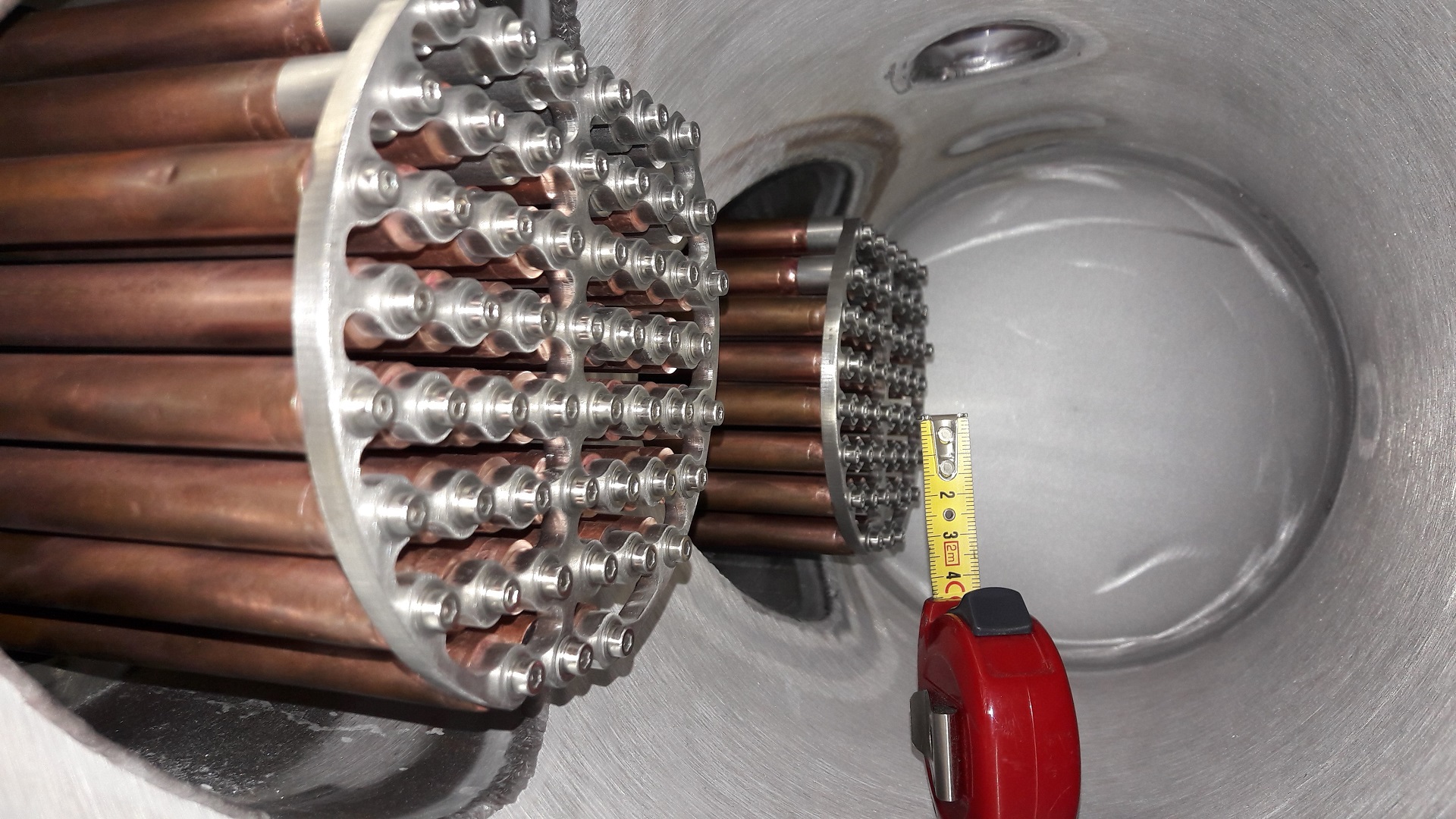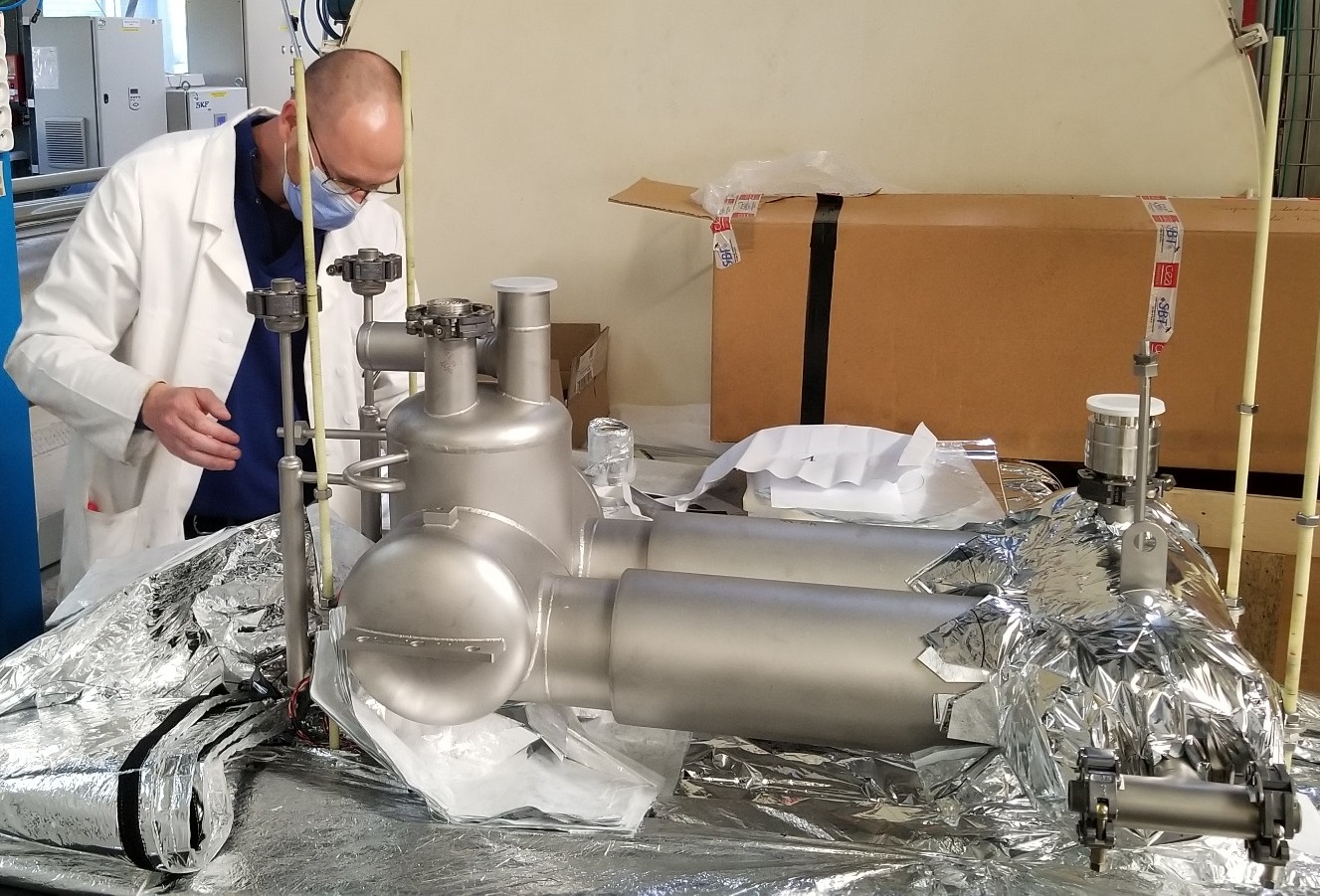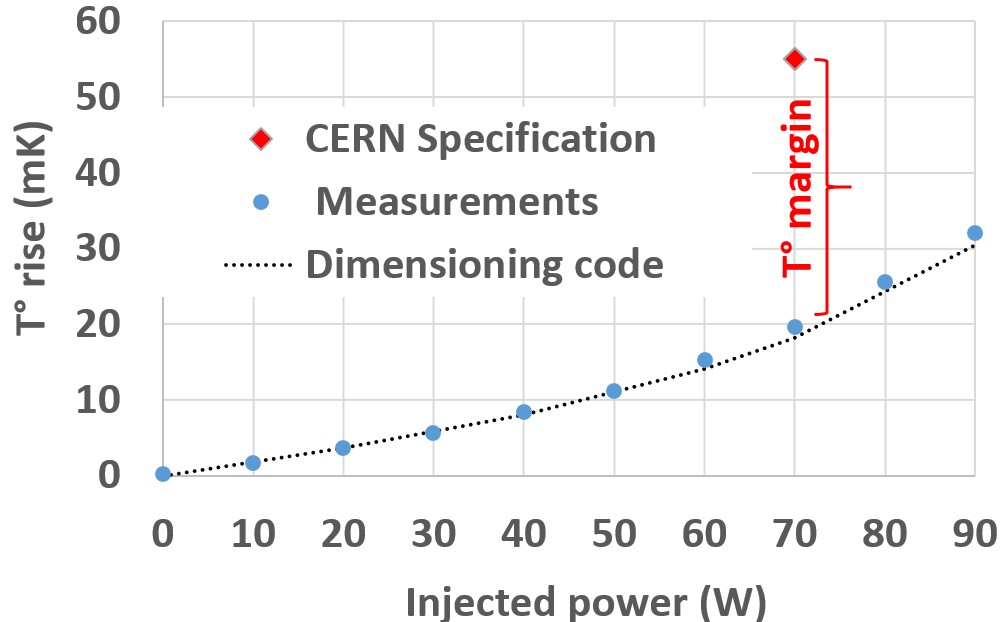The European Organization for Nuclear Research (CERN) in Geneva has decided to intensify the
luminosity of the Large Hadron Collider in order to increase the number and energy of
hadron collisions. To achieve this, the magnetic field intensity will be increased around the collision zones using new superconducting magnets cooled in a pressurized
superfluid helium bath with heat exchangers to evacuate the energy flux.
Researchers at IRIG first designed the 1.8 K (near absolute zero) cooling system for the 27 km of superconducting magnets installed in the LHC. The challenge was to design a new exchanger for extracting 70 W of thermal power from the future four
D2 superconducting magnets close to the collision zone where the detectors are installed, and limiting the temperature up to 220 mK at 1.8 K (respectively 55 mK at 2 K). Another major demand is that these new exchangers have to be compact (dimensions under 0.5 m) to fit into the restricted space of the LHC.
In France, IRIG is the only research institute having a cryogenic station with a helium refrigerator capable of extracting up to 400 W at 1.8 K: this unique test bench was used to characterize the performances of the prototype exchanger for the HL-LHC D2 magnets (figures 1-2).

|
Figure 1: Inside view of heat exchanger with copper tube bundles.
|

|
Figure 2: Outside view of the heat exchanger before testing at 1.8 K.
|
Thanks to these results, the researchers must now supply the final D2 magnet exchangers, incorporating the specific mechanical interfaces and long-term reliability required for the HL-LHC. One of these exchangers, selected at random, has just passed all thermal performance tests at the DSBT's 1.8 K test station. The exchanger's performances in extracting 70 W of heat are in line with the predictions of the DSBT designing code, and well above CERN's requirements, since it has a temperature rise margin close to twice that corresponding to the specifications (figure 3).

Figure 3: Thermal performance curves at 2 K - 1.3 bar with a good agreement between measurements and predictive code.
The exchangers can now be delivered to CERN and integrated into the D2 magnets for final installation in the LHC. These world-first results combine an integrated design with modeling that takes into account mechanical interfaces and the specific heat law of superfluid helium. These studies contribute to the IRIG’s ranking as one of the best cryogenic laboratories in the world and its helium test station shows remarkable adaptability to meet the challenges of accelerators, fusion reactors and quantum computer farms.
• Luminosity: in particle physics, luminosity corresponds to the number of collisions.
• Hadron collision: The LHC collides protons at energies up to 14 TeV.
• D2 Superconducting magnet: These magnets will be installed in the HL-LHC to recombine particles beams in the interaction zones on either side of the interaction points (collisions).
• Superfluid helium: Specific state of liquid helium below a transition temperature close to 2.2K